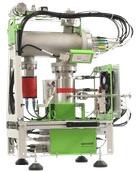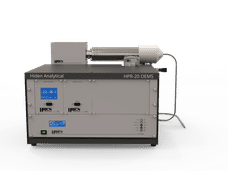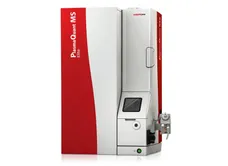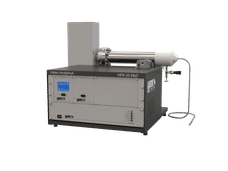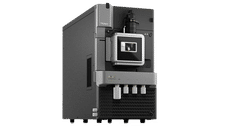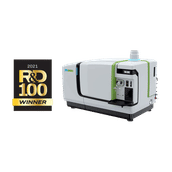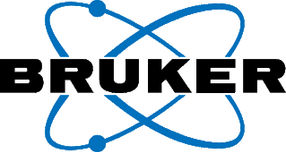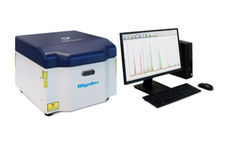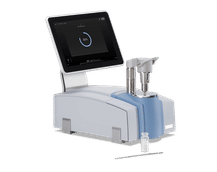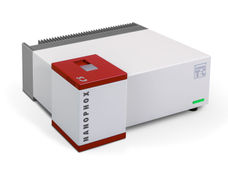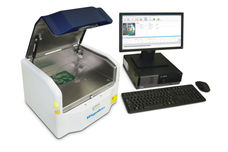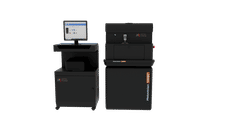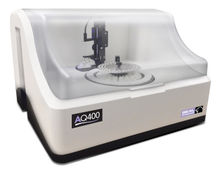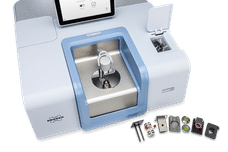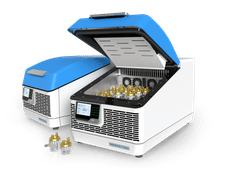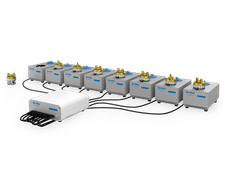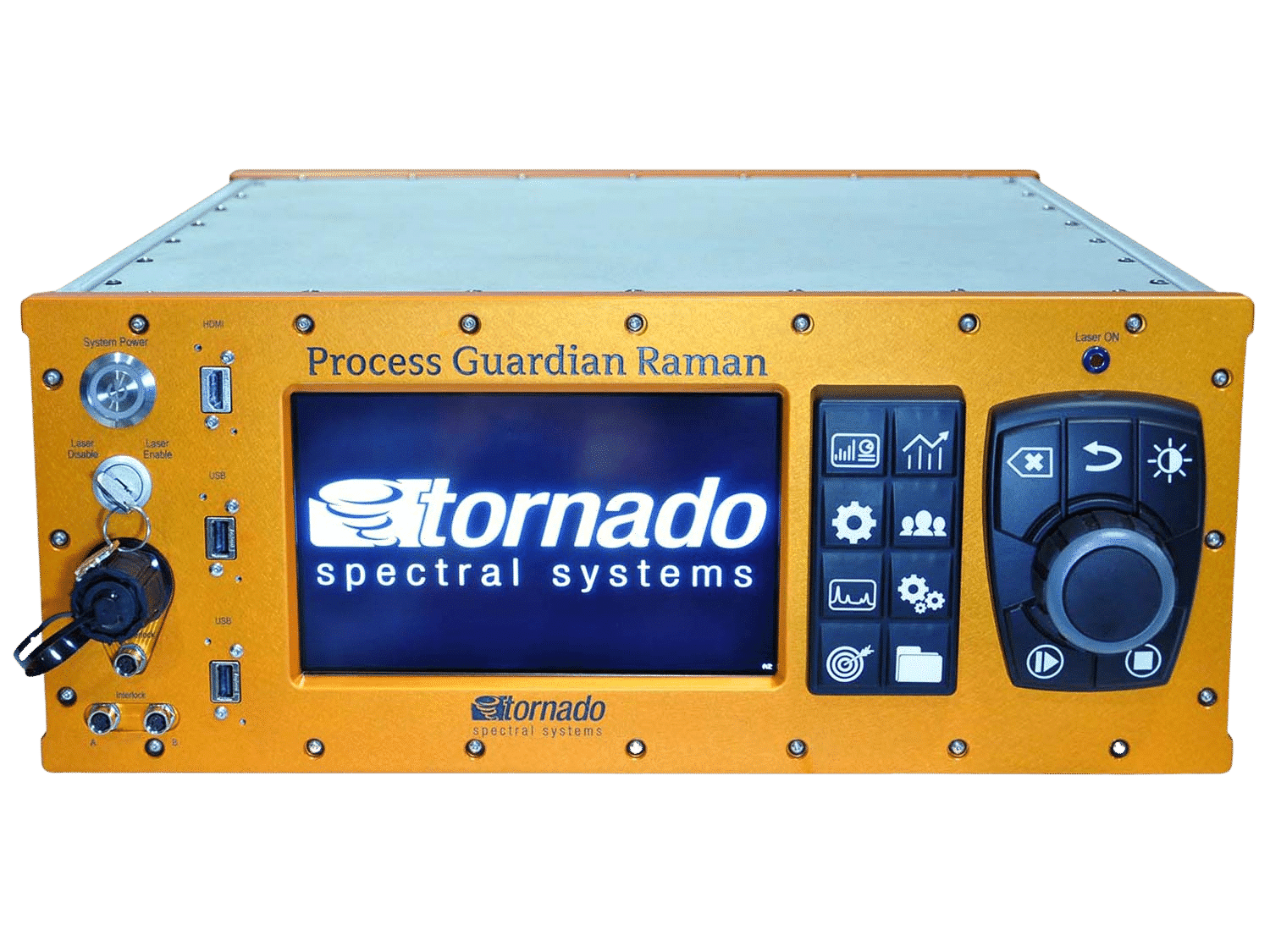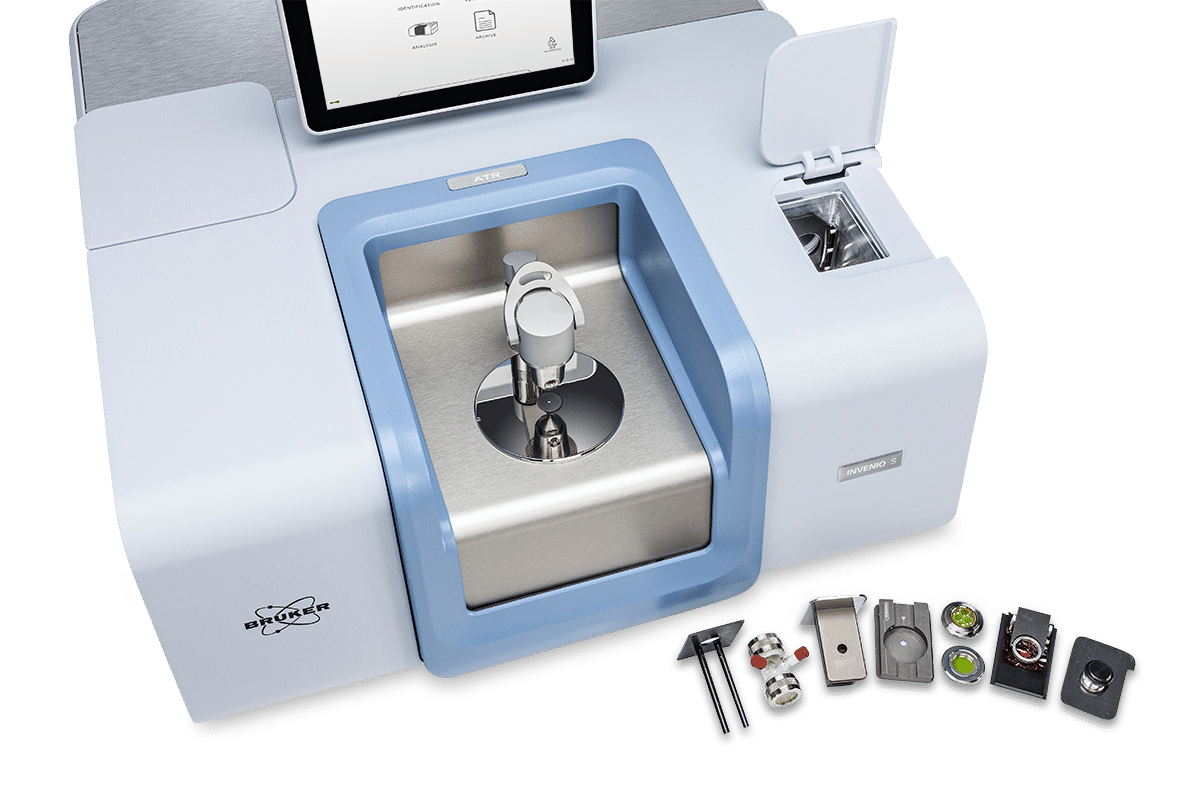Spectrometers at a Glance: Products, Function and Applications
Spectrometers break down light into its spectral components, measure their intensity and thus enable the precise analysis of the chemical and physical properties of samples. On this page you will find an overview of products from various manufacturers.
You are looking for general information about the topic? Our spectrometer guide gives you all the info you need on how they work and what they're used for.
Spectrometers at a Glance: Products, Function and Applications
Spectrometers break down light into its spectral components, measure their intensity and thus enable the precise analysis of the chemical and physical properties of samples. On this page you will find an overview of products from various manufacturers.
You are looking for general information about the topic? Our spectrometer guide gives you all the info you need on how they work and what they're used for.
Spectrometers at a glance
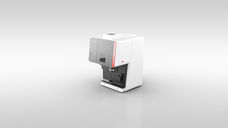 New
NewPlasmaQuant 9200 Series by Analytik Jena
PlasmaQuant 9200 Series
New HR-ICP-OES for complex sample matrices
Analytical excellence ✓ Space-saving powerhouse ✓ Simply reliable ✓
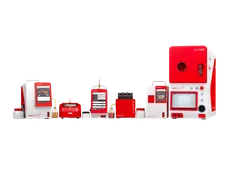 New
Neweralab OCM by eralytics
In-house Oil Condition Monitoring Solution
ERALAB OCM offers a range of easy to use, rugged and accurate oil analyzers
The advanced ERASOFT OCM software forms a symbiotic unit with the related eralab OCM analyzers ✓ Efficient collection, analysis and interpretation of oil analysis data in real time ✓ Individual combination of analyzers according to the customer's needs ✓
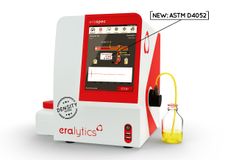
ERASPEC by eralytics
Spectral Fuel Analysis in Seconds with ERASPEC
Fast delivery of over 40 fuel parameters at the push of a button
Comprehensive fuel composition analysis for gasoline, diesel fuel and jet fuel at the push of a button in the lab and on-site ✓ Pre-installed and easily expandable & transferable databases ✓ Standards: ASTM D5845, D6277. D7806, D4052, D7777, EN238, EN14078, etc ✓
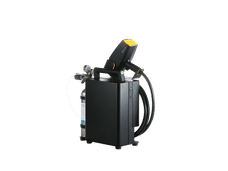
ferro.lyte by Elementar Analysensysteme
Mobile metal analysis: reliable, simple quality control in laboratory quality
Flexible metal testing and identification (PMI) on site
Intuitive operation: Analyses easier than ever ✓ High mobility: Measure anywhere at any time ✓ Precise metal analysis: results in laboratory quality ✓

CQL Max-ID / CQL Gen-ID / CQL Narc-ID by Rigaku
Rigaku CQL Handheld 1064 nm Raman Analyzers for Rapid Chemical Threat Analysis
The CQL family of handheld 1064 nm Raman have been designed specifically for border security, policing, customs, military, HAZMAT teams and first responders who come up against unknown substances that they need to identify quickly and reliably
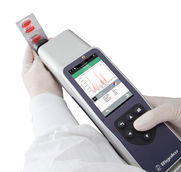
Prodigy by Rigaku
Progeny Handheld Raman Analyser for Raw Material Identification and Verification
Perform analytical laboratory-quality analyses of raw materials using the Progeny 1064nm handheld Raman analyzer. Suitable for the analysis of solids, powders, liquids and other substances, easily integrate the Progeny handheld Raman into your workflow

contrAA 800 by Analytik Jena
contrAA 800 Series – Atomic Absorption. Redefined
The best of classical atomic absorption and ICP-OES spectrometry are combined in the contrAA 800
Simple and cost-efficient multi-element analysis ✓ High-Resolution Optics: Interference-free analysis and highest precision ✓ Multi Element: One light source for fast-sequential and simultaneous multi-element analysis ✓
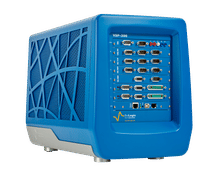
VSP-300 by Bio-Logic Science Instruments
Single & Multi-Channel Potentiostats for Simple and Demanding Electrochemical Measurements
An all-round solution that impresses with its accuracy and excellent reproducibility
Experiment control, data view, modeling and analysis are all included in one package ✓ Thanks to the modularity, the instrument including accessories is tailored precisely to your needs ✓ Easily scaleable from one to x channels, groupable, and simultaneous multi-user capability ✓
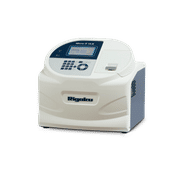
Micro-Z ULS by Rigaku
Accurately measure sulphur content in fuels: WDXRF analyser
Reliable routine analyses with 0.3 ppm detection limit and compact design
Superior optics ensure reliable performance ✓ High-resolution WDXRF performance ✓ Lower limit of detection: 0.3 ppm sulfur ✓ Ideal for routine testing
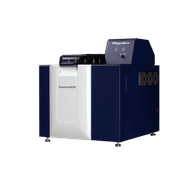
Supermini200 by Rigaku
Element analysis made easy: compact WDXRF spectrometer for industrial applications
Achieve fast and accurate results with minimal space requirements and advanced technology
The Rigaku Supermini200 packages delivers the WDXRF resolution of a much larger system into a compact, benchtop package. Its powerful software, ease
Choose spectrometers by product category
Select spectrometers for your application
Buy spectrometers for the lab or the production process
Spectrometer guide: Everything you need to know, clearly explained
Spectrometers are indispensable instruments in many scientific and industrial fields. They allow the composition of materials to be analyzed by measuring the intensity of light across a spectrum of wavelengths. Spectrometers have revolutionized the way we understand the world around us and have applications in industries ranging from chemical analysis to astronomical research.
Definition and basic function of a spectrometer

A spectrometer is a device that splits light into its spectral components and measures the intensity of these components. The basic function of the device is to collect, decompose and analyze the light to determine the spectral properties of a material or light source. This is done by using prisms or diffraction gratings to split the light into its components. A spectrometer makes it possible to identify the specific wavelengths that are absorbed or emitted by a sample, providing information about its chemical composition and physical properties.
Importance and applications in various industries
The importance of spectrometers cannot be overemphasized. They are indispensable in chemical analysis, environmental monitoring, astronomy, medicine and many other fields. In industry, spectrometers are used for quality control and material analysis. In medical diagnostics, they help in the detection and monitoring of diseases. The versatile applications of spectrometers make them a crucial tool in modern science and technology.
In the chemical industry, for example, spectrometers are indispensable for analyzing raw materials and end products. They enable the precise determination of chemical composition and thus help to ensure the quality and purity of chemicals. In environmental monitoring, the devices are used to analyze water and air samples in order to identify pollutants and contaminants and measure their concentration. In astronomy, they help to analyze the light from stars and galaxies to determine their composition, temperature and movement.
Types of spectrometers
Optical spectrometers
These are the most commonly used spectrometers. They use light in the visible region of the spectrum for analysis. These devices are particularly useful for the analysis of dyes, pigments and other light-sensitive materials. They are widely used in chemistry, physics and biology. The ability to use visible light makes optical spectrometers particularly valuable in the analysis of samples that have a direct or indirect visible reaction. These devices are also used in art restoration to analyze pigments and materials without damaging the artwork.
Mass spectrometers
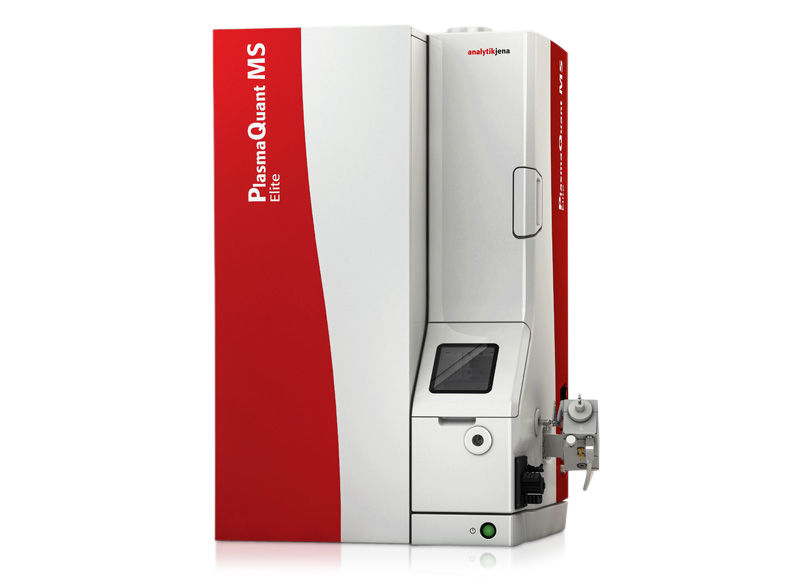
Mass spectrometers are devices that measure the mass of molecules in order to determine their structure and composition. They ionize the molecules, accelerate them through a magnetic field and measure the resulting masses. Mass spectrometers are commonly used in biochemistry, environmental analysis and forensic science. The ability to determine the exact mass and structure of molecules makes these instruments an essential tool in chemical and biological research. Mass spectrometers are also used in pharmacology to test the composition and purity of drugs.
NIR spectrometers
Near-infrared (NIR) spectrometers use the near-infrared spectrum to analyze materials. They are particularly effective for the analysis of organic compounds and are used in agriculture, the food industry and pharmaceuticals. NIR spectrometers are useful for analyzing water content, proteins, fats and other important components in food and agricultural products. In agriculture, the devices are used to monitor the quality of grain and other crops and ensure that they meet the required standards.
UV spectrometers
Ultraviolet (UV) spectrometers measure the absorption and emission of light in the ultraviolet region of the spectrum. They are often used in chemistry and biochemistry to determine the concentration of substances in solutions. The devices are particularly valuable in analyzing samples that are sensitive to UV light and allow the composition and concentration of substances to be accurately determined. In medical research, UV spectrometers are used to analyze DNA and proteins in order to investigate their structure and function.
UV/Vis spectrometers
UV/Vis spectrometers combine the analysis of ultraviolet and visible light. They are versatile and are used in environmental analysis, chemistry and biology to determine the concentration and composition of samples. UV/Vis spectrometers are ideal for the quantitative analysis of samples that react in the UV or visible spectral range and enable precise measurement of the concentrations of substances. In water analysis, these instruments are used to measure pollutants and nutrients in water samples.
FT-IR spectrometers
Fourier transform infrared (FT-IR) spectrometers are powerful instruments that use the infrared spectrum to analyze the molecular structure of samples. They are particularly useful for the identification of organic and inorganic substances and are used in materials science and pharmacy. FTIR spectrometers enable fast and precise analysis of chemical compounds and are therefore indispensable in many laboratories. In forensics, they are used to analyze chemical residues and trace materials.
Raman spectrometers
Raman spectrometers measure the inelastic scattering of light, known as Raman scattering. This technique enables the investigation of molecular vibrations and thus the chemical composition of materials. These instruments are used in chemistry, materials science and medicine. The ability to provide detailed information about molecular structures makes them particularly useful for analyzing complex samples. In geology, Raman spectrometers are used to determine the mineralogical composition of rock samples.
How a spectrometer works
Fundamental components
A spectrometer consists of several basic components:
- Light source: The light source emits radiation that is used for examination. This light source can be a lamp, laser or other radiation source, depending on the type of spectrometer. The quality and stability of the light source significantly influence the accuracy and reliability of the measurements.</li
- Optical system (mirrors, lenses): The optical system directs and focuses the light. Mirrors and lenses are used to direct and focus the light so that it reaches the sample in the desired way. The optical system must be precisely adjusted to achieve the best results.
- Detector: The detector measures the intensity of the light after it interacts with the sample. Detectors can be photodiodes, CCDs or other light-sensitive sensors that measure the intensity of the light transmitted or emitted by the sample. The sensitivity and response of the detector are critical to the accuracy of the measurements.</li
Principles of operation
The operation of a spectrometer is based on various physical principles:
- Refraction, diffraction, interference: These phenomena are used to split the light into its spectral components. Prisms and diffraction gratings are the most common devices used to split the light into its different wavelengths. The choice of the appropriate splitting method depends on the specific application and the desired measurements.</li
- Wavelength measurement and analysis: The split light is analyzed to determine the wavelengths and their intensities. This information is then used to determine the composition and properties of the sample. The analysis is performed by comparing the measured intensities with known standards or reference spectra.</li
Applications of spectrometers
Industrial applications
In industry, spectrometers are used for quality control and production monitoring. They help to analyze raw materials and end products to ensure that they meet the required standards. Spectrometers can be used in metallurgy, polymer production and other industries to check the composition and quality of materials. In the pharmaceutical industry, the devices are used to analyze the purity and composition of active ingredients and medicines
In the automotive industry, spectrometers are used to analyze emissions and monitor exhaust gas purification systems. They help to meet the legal requirements for exhaust emissions and reduce environmental pollution. Spectrometers are also useful in the textile industry to analyze dyes and pigments and ensure that products meet color specifications.
Scientific research
Spectrometers are indispensable in scientific research. They enable the precise analysis of materials and the investigation of physical and chemical processes. In astronomy, spectrometers are used to analyze the light of stars and galaxies and obtain information about their composition, temperature and movements. In geochemistry, spectrometers are used to analyze the composition of rocks and minerals and to understand geological processes.</p
In biology and biochemistry, spectrometers are used to analyze proteins, nucleic acids and other biomolecules. They make it possible to determine the structure and function of biomolecules and contribute to the understanding of biological processes. In environmental science, they are used to analyze soil and water samples to identify pollutants and measure their concentration.
Medical applications
In medicine, spectrometers are used to diagnose and monitor diseases. They help to analyze blood samples and other biological materials. Spectrometers can be used to determine the concentration of drugs in the blood, to analyze proteins and enzymes and to study genetic composition. In pathology, spectrometers are used to analyze tissue samples and identify cancer cells.
Spectrometers are also used in medical imaging to create detailed images of internal structures of the body. These images help in the diagnosis of diseases and the planning of treatments. In molecular diagnostics, spectrometers are used to identify genetic mutations and biomarkers associated with certain diseases.
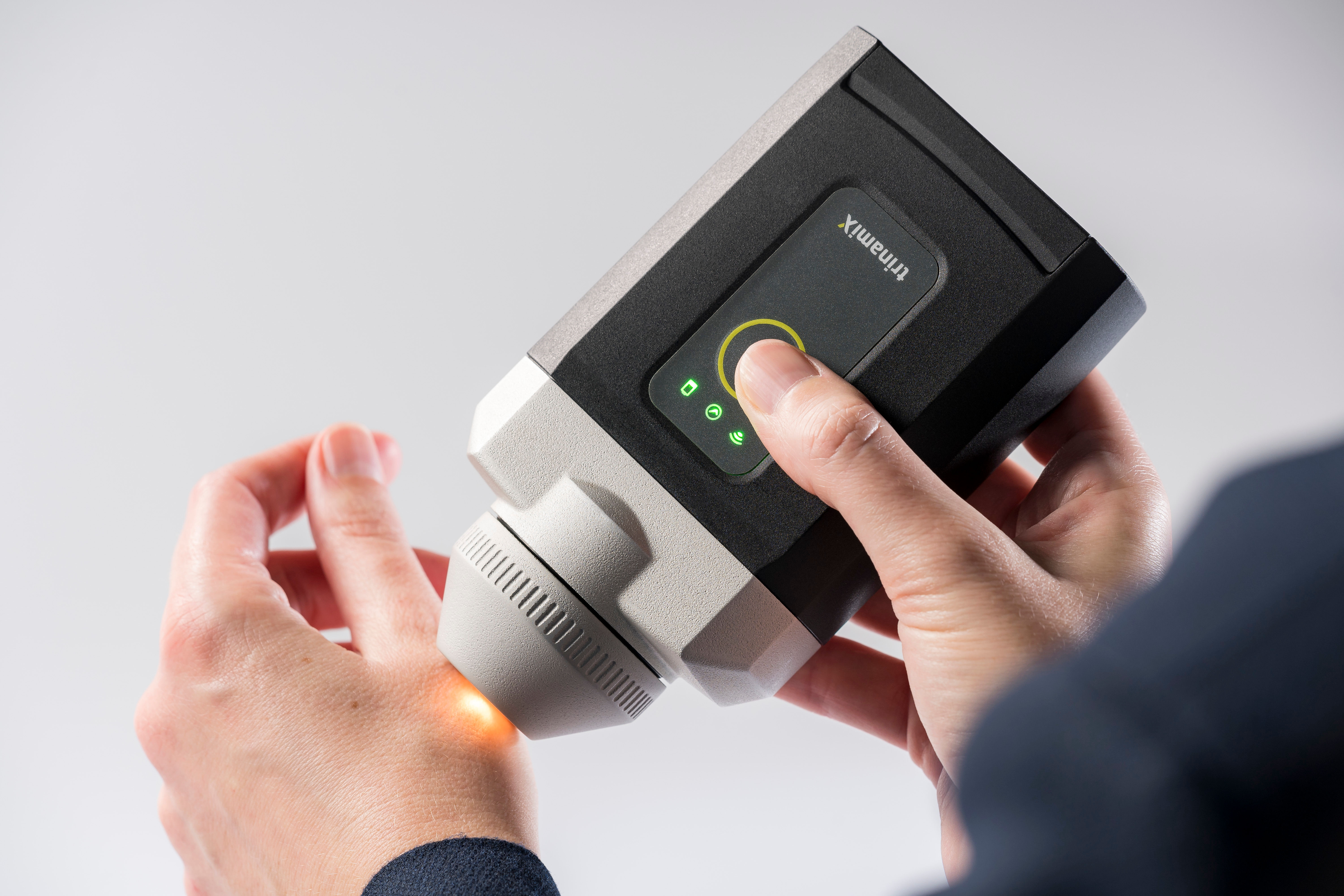
Food industry
In the food industry, spectrometers play an important role in the analysis of ingredients and quality assurance. They help to determine the composition of nutrients and detect impurities. Spectrometers can be used to measure water content, fat content, protein content and other important parameters in food. In food monitoring, spectrometers are used to analyze pesticide residues and other contaminants to ensure food safety.
In the beverage industry, spectrometers are used to analyze ingredients and monitor production processes. They help to ensure the quality of wine, beer and other beverages and to meet legal requirements. Spectrometers are also used in the research and development of new food products to analyze their composition and sensory properties.</p
Spectrometer selection criteria
Accuracy and resolution
The accuracy and resolution of a spectrometer are decisive factors in choosing the right device. They determine the ability of the device to detect small differences in spectral properties. High resolution is particularly important for applications where accurate measurements are required. Accuracy depends on the quality of the optical components, the stability of the light source and the sensitivity of the detector.
When selecting a spectrometer, the reproducibility of the measurements should also be taken into account. A good product should be able to deliver consistent and repeatable results. Calibration is also important to ensure accurate and reliable measurements.
Measuring range and sensitivity
The measuring range and sensitivity of a spectrometer are also important criteria. They influence the ability of the device to analyze samples of different concentrations and compositions. A wide measuring range enables the analysis of a wide range of samples, while a high sensitivity enables the detection of low concentrations. The choice of the appropriate measurement range and sensitivity depends on the specific application and measurement accuracy requirements.</p
When selecting a spectrometer, noise suppression should also be taken into account. A good spectrometer should be able to minimize background noise and provide clear, precise signals. The use of appropriate filtering techniques and electronic amplifiers can help to improve the sensitivity of the spectrometer.
Application areas and application specifications
The specific areas of use and application specifications should be taken into account when selecting a spectrometer. Different applications require different spectrometer types and configurations. It is important to select a spectrometer that meets the requirements of the specific application. When selecting a spectrometer, the operating conditions and the environment in which the device will be used should also be taken into account.
Another important criterion is the flexibility and versatility of the spectrometer. A good spectrometer should be able to analyze a variety of samples and applications. The ability to adapt the spectrometer to different measurement requirements can significantly increase its usefulness and value.
Cost and budget considerations
The cost and available budget play an important role in the selection of a spectrometer. It is important to choose a device that meets the requirements while staying within budget. It should also be taken into account that operating costs and maintenance costs will be incurred over time. When evaluating the cost of a spectrometer, both the initial purchase cost and the long-term operating costs should be taken into account.
Maintenance and calibration are also important cost factors. Regular maintenance and calibration are necessary to ensure the accuracy and reliability of the spectrometer. The availability of spare parts and technical support should also be considered when selecting a spectrometer.
Maintenance and calibration of spectrometers
Regular maintenance tips
Regular maintenance is crucial for the long-term performance of a spectrometer. This includes cleaning the optical components and checking the light source. It is important to follow the manufacturer's instructions and carry out regular inspections to ensure that the spectrometer is working properly. The cleaning of the optical components should be carried out carefully to avoid damage.
The inspection and adjustment of the light source are also important maintenance measures. The light source should be checked regularly and replaced if necessary to ensure constant and stable light emission. Adjustment of the light source can significantly affect the performance of the spectrometer and should be carried out carefully.
Calibration procedure
Calibration of a spectrometer ensures that the measurement results are accurate and reproducible. Calibration procedures include the use of standard samples and adjustment of the instrument. Calibration should be performed regularly to ensure that the spectrometer provides accurate and reliable results. The use of certified reference materials can help to ensure the accuracy of the calibration.
It is important to keep a calibration log and carefully document all calibration steps. This helps to ensure traceability of the measurement results and to identify possible sources of error. Calibration should also be checked regularly and adjusted if necessary to ensure that the spectrometer is working optimally.
Troubleshooting and support
If there are problems with a spectrometer, it is important to carry out systematic troubleshooting. Many manufacturers offer technical support and repair and maintenance services. Thorough troubleshooting can help to identify the cause of the problem and take appropriate action. Using the right troubleshooting tools and techniques can improve the efficiency and accuracy of repair measures.</p
The manufacturer's technical support can be a valuable resource when troubleshooting and maintaining the spectrometer. Many manufacturers offer training and educational materials to help users better understand and maintain their devices. Access to qualified technical support can extend the life of the spectrometer and improve its performance.
Future trends in spectrometry
Technological developments
Spectrometry is a rapidly evolving field with many technological advances. These include improvements in detector technology, the miniaturization of devices and the integration of spectrometers into portable and mobile devices. These developments are making spectrometers more versatile and accessible, enabling new applications and uses.
The development of high-resolution detectors and advanced data processing techniques has significantly improved the accuracy and sensitivity of spectrometers. The miniaturization of spectrometers has increased portability and ease of use, facilitating their use in various applications. Portable spectrometers are increasingly used in field research, industrial monitoring and medical diagnostics.
Innovative applications
New and innovative applications of spectrometers are emerging all the time. These include the real-time analysis of samples in industrial processes and the use of spectrometers in personalized medicine. The ability to integrate spectrometers into portable and mobile devices opens up new possibilities for on-site analysis and real-time monitoring.
In personalized medicine, spectrometers are used to analyze individual biomolecular profiles and develop personalized treatment plans. Real-time analysis of samples in industrial processes enables faster and more precise monitoring and control of production. These innovative applications help to improve the efficiency and accuracy of scientific and industrial processes.
Market developments and forecasts
The market for spectrometers is growing steadily, driven by increasing demand in various industries. Forecasts show that this trend will continue in the coming years, especially with the increasing importance of quality assurance and precise analysis. The increasing need for high-precision analysis and the growing importance of environmental monitoring and health diagnostics are contributing to the growth of the market.
The increasing availability of portable and cost-effective spectrometers is expanding the application possibilities and increasing the demand in various fields. The integration of spectrometers in mobile devices and the development of cloud-based data processing systems are improving accessibility and ease of use. These developments are driving market growth and opening up new opportunities for manufacturers and users.</p
Frequently asked questions (FAQ) about spectrometers
How does a spectrometer work?
A spectrometer breaks down light into its spectral components and measures their intensity. This makes it possible to analyze the chemical composition and physical properties of samples.
What types of spectrometers are there?
There are different types of spectrometers, including optical spectrometers, mass spectrometers, NIR spectrometers, UV spectrometers, FT-IR spectrometers, Raman spectrometers and UV/Vis spectrometers. Each type is suitable for specific applications and light ranges.
How do I choose the right spectrometer for my application?
Choosing the right spectrometer depends on the specific requirements of your application, such as measuring range, sensitivity and accuracy. Also take into account the areas of application and budget considerations.
How often should a spectrometer be calibrated?
A spectrometer should be calibrated regularly to ensure accurate and reproducible results. The frequency of calibration depends on usage and specific requirements, but generally at least once a year.
What are the most important maintenance tips for a spectrometer?
Regular maintenance includes cleaning the optical components, checking the light source and calibrating the device. Follow the manufacturer's instructions to maximize the life and accuracy of the spectrometer.
What are the differences between optical and mass spectrometers?
Optical spectrometers use light in the visible range for analysis, while mass spectrometers measure the mass of molecules. Optical spectrometers are ideal for dyes and pigments, mass spectrometers for the analysis of molecular masses and structures.
What are Raman spectrometers used for?
Raman spectrometers measure the inelastic scattering of light to analyze the molecular vibrations and chemical composition of materials. They are particularly useful in chemistry, materials science and medicine.
Can a spectrometer be used for environmental monitoring?
Yes, spectrometers are widely used in environmental monitoring. They analyze water, air and soil samples for pollutants and contaminants, helping to monitor environmental quality.
How can I extend the life of my spectrometer?
Regular maintenance, correct calibration and careful handling can extend the life of your spectrometer. Follow the manufacturer's instructions and carry out regular inspections.
What are UV/Vis spectrometers and what are they used for?
UV/Vis spectrometers combine the analysis of ultraviolet and visible light. They are used in environmental analysis, chemistry and biology to determine the concentration and composition of samples.
How do NIR spectrometers differ from UV spectrometers?
NIR spectrometers use the near-infrared spectrum for analysis, while UV spectrometers use ultraviolet light. NIR spectrometers are ideal for analyzing organic compounds, while UV spectrometers are ideal for analyzing samples that react in the UV range.
Why are FT-IR spectrometers important in the pharmaceutical industry?
FT-IR spectrometers use the infrared spectrum to analyze the molecular structure and are indispensable in pharmacy. They enable the rapid and precise identification of organic and inorganic substances.
Summary of the most important points
Spectrometers are versatile and powerful instruments that are indispensable in many scientific and industrial fields. From chemical analysis to medical diagnostics, spectrometers provide accurate and reliable data that helps improve quality and efficiency. By selecting the right spectrometer and performing regular maintenance and calibration, their benefits can be maximized. Future developments in spectrometry promise further improvements and new applications that will further increase the importance of this technology.
Overall, spectrometers offer a wide range of applications and benefits that make them an important tool in modern science and industry. Their ability to perform accurate and detailed analysis makes them an indispensable part of many research and production processes. Continuous development and innovation in spectrometry means that these devices will continue to play a central role in many areas in the future.
Haven't found the right product yet?
The chemeurope.com Product Search
Start your targeted search now with a wide selection of filter options. Here you can easily find the right product for your search, including manufacturer information and options for requesting a quote or downloading the corresponding brochure.



